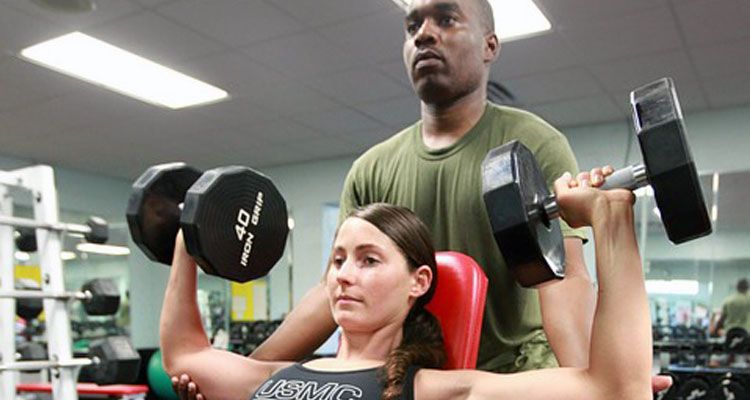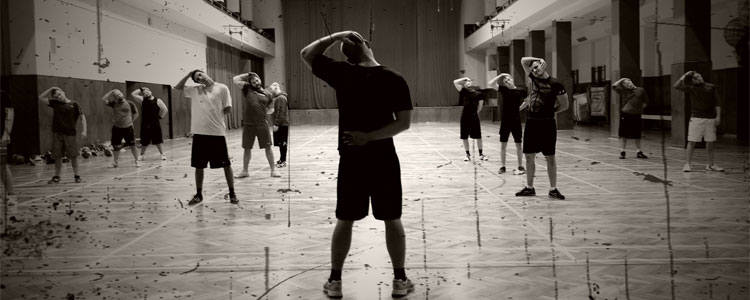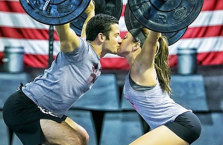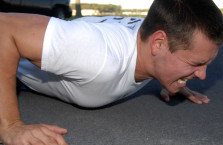You’ve finally made the commitment to get in shape or maybe to take your physical fitness to the next level. Eager to start seeing results, you jump into your new routine feet-first. And the next sound you hear is “ouch” as a workout injury derails your healthful plans.
Why does it happen?
Gerald Varlotta, director of sports rehabilitation medicine at New York University’s Hospital for Joint Diseases and the Rusk Institute of the NYU Medical Center, says, “Sometimes it’s a matter of doing the right activity too much or too often. Sometimes it’s a matter doing the right activity wrong. And sometimes it’s a matter of choosing the wrong activity for your particular body type or physical conditioning.”
Here are some simple steps you can take to work out smarter and avoid the most common fitness injuries.
1. Know Your Body

One of the best ways to avoid fitness injuries is to know your body’s limitations.
Orthopedic surgeon Kenneth Plancher, associate clinical professor at Albert Einstein College of Medicine in New York, says, “This isn’t just about avoiding certain fitness activities until you’re in better shape, though that’s part of it. It’s also about knowing what your weak areas are and then avoiding the type of activities that are going to push hard on that weakened area.”
For example, if you know you have knee problems, Plancher says, you don’t want to use a stepper, run on a treadmill, or do leg presses, all of which can aggravate an already weakened knee.
“Instead, you want to try a stationary bike or even an elliptical machine, which does not cause any pounding on the knee joints,” Plancher says.
Likewise, he says, if you have a bad back, you should avoid doing back stretches on a stability ball. If you have weak wrists, weight lifting may not be your sport. And hip problems may preclude you from joining an indoor cycling class.
“The point is that you have to acknowledge the weakest areas of your body,” Plancher says. “And if you can’t slowly build them up, then, to avoid injury, you have to avoid the activities that stress them.”
2. It’s All About Sex

No, not the kind you have on Saturday night. We’re talking gender.
Plancher says, “Both men and women have specific gender-related physiologic issues that can set them up for injuries when they do specific types of workouts.”
This doesn’t mean either gender should avoid certain activities, Varlotta says. But it does mean taking certain precautions when you exercise.
“In general,” Varlotta says, “men function better in activities requiring a rigid plane of motion — like weight lifting in a restricted format, push-ups, Nautilus machines. Women, who have certain flexibility issues, do better at activities requiring multiple or diagonal planes of motion, like Pilates, yoga, a stair stepper, or cycling — activities during which men are more likely to be injured.”
Women are at greater risk for ACL (anterior cruciate ligament) injuries. The ACL is a ligament that holds the knee in place. Consequently, Varlotta says, women should exert greater care when participating in activities that require quick “twist and turn” leg motions, such as skiing, basketball, and racquet sports.
Plancher says, “Studies also show that women are more prone to fitness injuries during their menstrual cycle since hormones can increase the looseness of the joints and make injury more likely to occur.” Being careful during this time of the month, he says, may help you avoid injury.
3. Hire a Pro

“One of the best ways to avoid injury is to take a few lessons with a certified trainer,” Plancher says. This will help ensure your body is in proper alignment while you’re working out, which can go a long way toward protecting you from exercise injuries, he says.
Getting expert advice can also keep you from doing the wrong workouts for your body type and help you moderate your routines so you don’t do too much, too soon, says personal trainer Alex Schroeder.
“A trainer will aid in the appropriate progression of exercises, weights, and rest periods,” Schroeder says. “The right program will allow muscles to heal properly, which in turn helps avoid some of the more common injuries.”
While almost any pro can give you some pointers worth listening to, Plancher says you should make certain your trainer is aware of your personal parameters, including your age.
“If your trainer is in their 20s and you’re in your 40s, make sure he or she has some background in the natural degenerative processes of the human body,” Plancher says. “There is such a thing as a trainer pushing you too hard, and that can increase the risk of injury.”
4. Act Your Age
It starts out as a simple desire: You just want to get more exercise. But somehow, a kind of “fitness amnesia” takes over. Before you know it, you’ve blocked out the years — or sometimes decades — since the last time you exercised.
The end result is that you do too much too quickly for too long with too much intensity. And injury is often the end result, Plancher says.
The shoulders, he says, are among the body parts at greatest risk when old athletic dreams die hard.
If you repeat a motion that puts too much strain on your shoulder joint or force the muscles to work in a misaligned way, Plancher says, it’s hard not to end up with a fitness injury.
5. Warm It Up and Take It Slow

Whatever type of fitness activity you’re doing, you’re less likely to get injured if you warm up before every session and slowly build the pace of your workout over time.
“The warm-up helps the muscles to handle stress so they are less likely to be injured,” Plancher says. “And the pacing is just the common sense way to avoid injury.”
So if, for example, you’re new to weight training, start with weights you can lift for 8-12 reps, and do no more than three sets. When that gets easy, increase the weight by just 2% at your next session.
“Overestimating your [strength] will lead to improper technique and recruitment of auxiliary muscles,” Schroeder says. Translation: It means a higher risk of injury.
Plancher says this same moderation principal applies to almost every fitness activity: “Whatever you think you can do or think you should be doing, dial it down a notch. Almost everyone thinks they are in better shape than they are, which is how and why injuries occur.”
6. Don’t Overdo It
While doing one exercise over and over will certainly help you perfect it, it can also set you up for a workout injury.
When you repeat the same muscle movements, Schroeder says, it leads to “overuse and repetitive use injuries, such as shin splints, tendinitis, and never-ending muscle soreness.”
The way to avoid problems, he says, is to vary your workouts — for example, running on a treadmill one day and lifting weights the next.
It’s also important to give muscles adequate rest between workouts.
“It’s OK to work out every day as long as you’re not feeling the pain,” Varlotta says. “But if you are [working out every day], remember that tired muscles are an invitation to injury. So give yourself adequate time to rest and recover.”
Schroeder adds that the best way to keep a small injury from becoming a larger one is to rest the sore muscle. “It’s the best avenue to a speedy recovery,” he says.
Thanks to WebMD for these awesome tips! You can visit their website for more information.













![Blast Your Fat With This Quick Cardio Workout [VIDEO]](http://FitPhreak.com/wp-content/uploads/2015/06/exercise-771466_640-223x145.jpg)